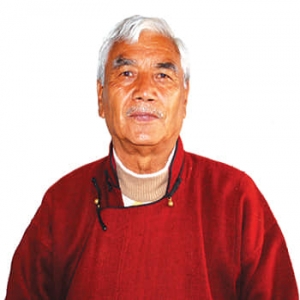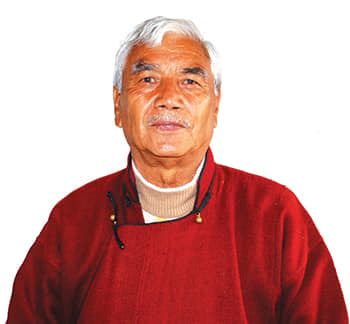
.png) Joseph Maliakan
Joseph Maliakan

The unprecedented protests in Ladakh, leading to police firing, indiscriminate arrest, and suspension of the constitutional rights of the people of the snow-bound Himalayan district, are the result of continued discrimination meted out to the people of the region by both the Union Government and the Government of Jammu and Kashmir.
The alienation of the predominantly Buddhist population of Ladakh started within a few years of independence. Such was the neglect and alienation of the population that by the 1970s, the people of the area had completely lost their faith in the administration and stopped approaching it for any help.
The Ladakhi Buddhists genuinely feared that their ethnicity and culture were under threat of domination by the Kashmiris. Since the 1970s, they have been demanding Union Territory status for the region to preserve their ethnic identity and culture. In support of the demand, the Ladakh Buddhist Association (LBA) launched an agitation in 1980.
The agitation was called off in October 1989, more than 35 years ago, following a tripartite agreement involving the LBA, the Union Government of India and the Government of Jammu and Kashmir.
The agreement was signed on October 29, 1989, by Mr Thupstan Chhewang, the then President of the LBA, Mr Ashok Jaitely, the then Additional Chief Secretary of Jammu and Kashmir, and Mr PP Srivastava, Additional Secretary, Ministry of Home Affairs, Government of India. Discussions on the problems faced by the Ladakhis were to be resolved, and an Autonomous District Council was to be established until the region was granted Union Territory status through a constitutional amendment, according to the agreement.
However, for more than a decade, the 1989 tripartite agreement remained a dead letter, and no discussions were held with the LBA either by the Union Government or the Government of Jammu and Kashmir.
In view of the continued apathy of both the Union and State governments to the plight of the people of the border district of Ladakh, the LBA, at a massive public rally in Leh on February 14, 1991, declared its intention to revive the agitation demanding Union Territory status for the region.
This reporter was present at the rally in 1991 at which thousands of Ladakis, braving sub-zero temperatures (minus 14 degrees Celsius) and strong winds, gathered demanding UT territory status to escape the domination by Kashmiris.
Addressing the rally, LBA President Thupstan Chhewang had announced the revival of the agitation for UT territory status for Ladakh. The stir would continue until the demands were conceded, he had declared.
He had regretted the fact that, despite the tripartite agreement, both the Union government and the Government of Jammu and Kashmir refused to hold discussions with the LBA, even for setting up an Autonomous District Council for Leh. The Ladakh Muslim Association (LMA) had also lent its support to the demand for UT status for Ladakh at the rally.
The problems faced by the people of Kargil were also the same as those in Ladakh, and people of both the Himalayan districts should take their future into their own hands, Mr Thupstan had declared. Mr Rigzin Spalbar, joint secretary of the LBA, had said that because of continued discrimination by the Government of Jammu and Kashmir, the Ladakhis had virtually become slaves in an independent country.
The people of Ladakh joined India so that they could live with dignity and respect. However, because of continued discrimination, Ladakhis' cultural and ethnic identity itself was under threat. This was even though the Ladakhis had discharged their duty to the country honourably, especially during wars with China and Pakistan, he added.
At the 1991 rally, Mr KL Sharma, General Secretary of the Bharatiya Janata Party, had warned the Government of Jammu and Kashmir against delaying in meeting the genuine demands of the people of Ladakh.
Fast forward to 2019, instead of acceding to the demand for Union Territory status to Ladakh and including the Himalayan districts under the Sixth Schedule of the Constitution, as if rubbing salt into a wound, the Union Government abolished Article 370 of the Constitution, dividing the state into two Union Territories, Jammu and Kashmir with a legislature and Ladakh without a legislature!
Consequently, for more than five years, there has been no popular government in Ladakh. People have no forum to express their grievances. Naturally, they are now demanding the status of a state with a legislature and the inclusion of the Himalayan districts in the Sixth Schedule of the Constitution, so that outsiders do not settle in the region, changing the ethnic and cultural composition of the population.
Instead of negotiating with the representatives of the people, the current dispensation in the state resorted to firing on the protesters, resulting in the death of four persons, Rinchen Dadul, Jigmet Dorjay, Stanzin Namgyal and Tsewang Tharchin, a Kargil war veteran!
Furthermore, to complicate matters, the Government arrested Sonam Wangchuk under the stringent National Security Act (NSA). He is a highly respected environmental activist who has made immense contributions to the well-being of the people of Ladakh through his world-renowned innovations. The release of all arrested individuals and the withdrawal of cases registered against them before starting negotiations on the long-pending demands of the Ladakhis is the only way to restore peace in the border area.